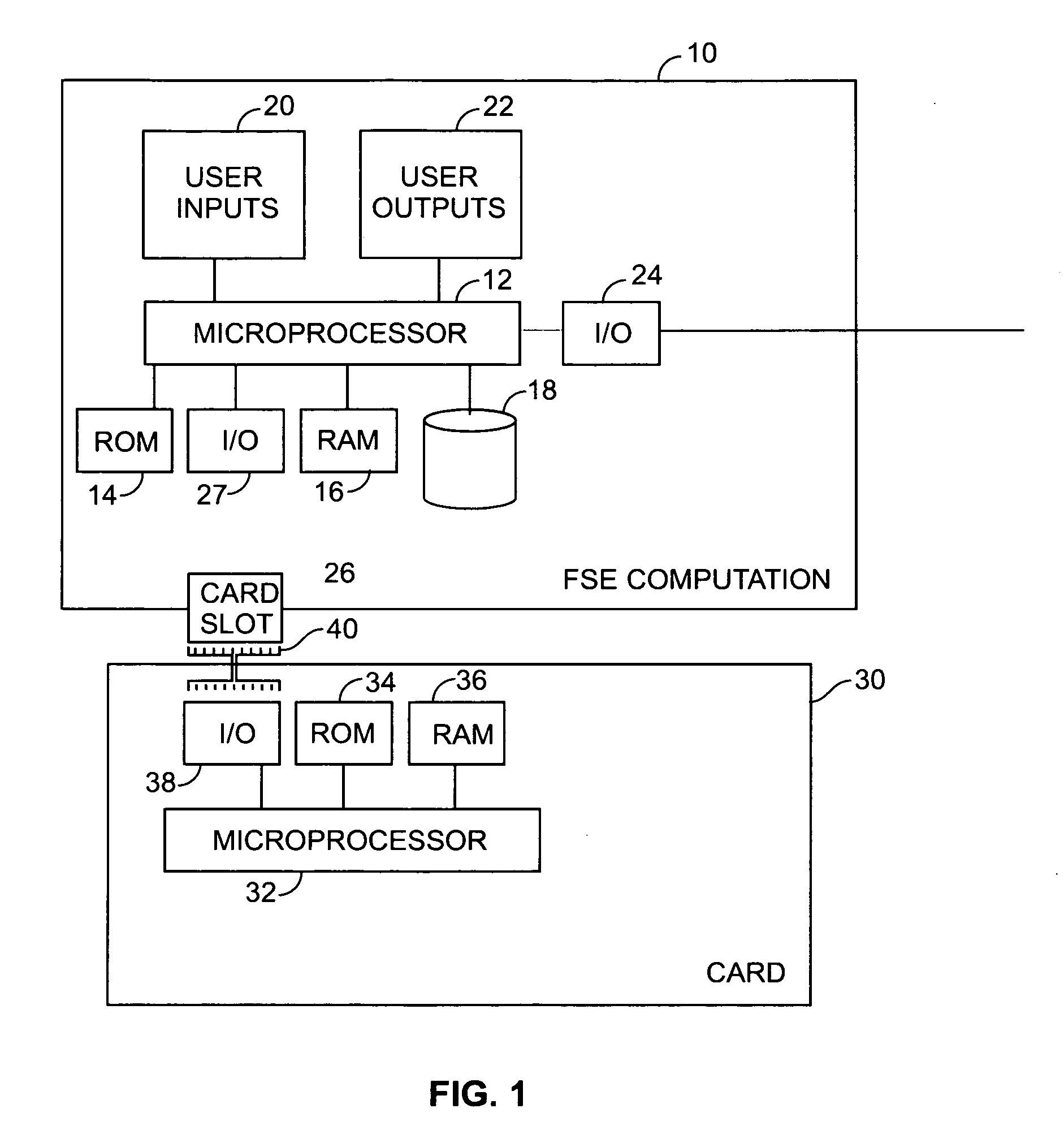Method of efficient secure function evaluation using resettable tamper-resistant hardware tokens
- Summary
- Abstract
- Description
- Claims
- Application Information
AI Technical Summary
Benefits of technology
Problems solved by technology
Method used
Image
Examples
Embodiment Construction
[0014]One aspect of the present invention resides in the recognition that the use of a removable tamper-proof card in the possession of a receiving party containing the secret keys of the sending party can be utilized in a method for processing values, e.g. SFE values, based on the keys can provide acceptable security for data transfer operations while greatly increasing computational efficiency.
[0015]In FIG. 1, a computing apparatus 10, suitable for implementing an FSE method in accordance with the present invention, includes a microprocessor 12 that performs processes and tasks based on stored program instructions. It is supported by read-only memory (ROM) 14, random access memory (RAM) 16 and nonvolatile data storage device 18. As will be understood by those skilled in the art, data and stored program instructions in ROM 14 is typically utilized by microprocessor 12 to initialize and boot the computing apparatus. An application program, e.g. a program that controls the implementa...
PUM
 Login to View More
Login to View More Abstract
Description
Claims
Application Information
 Login to View More
Login to View More - R&D
- Intellectual Property
- Life Sciences
- Materials
- Tech Scout
- Unparalleled Data Quality
- Higher Quality Content
- 60% Fewer Hallucinations
Browse by: Latest US Patents, China's latest patents, Technical Efficacy Thesaurus, Application Domain, Technology Topic, Popular Technical Reports.
© 2025 PatSnap. All rights reserved.Legal|Privacy policy|Modern Slavery Act Transparency Statement|Sitemap|About US| Contact US: help@patsnap.com



